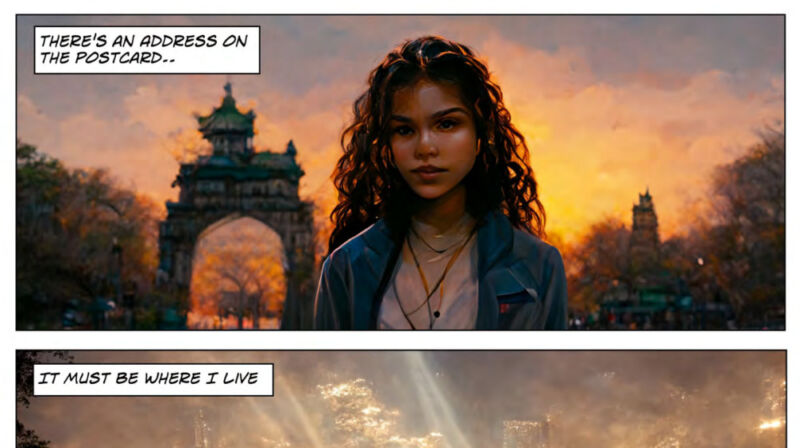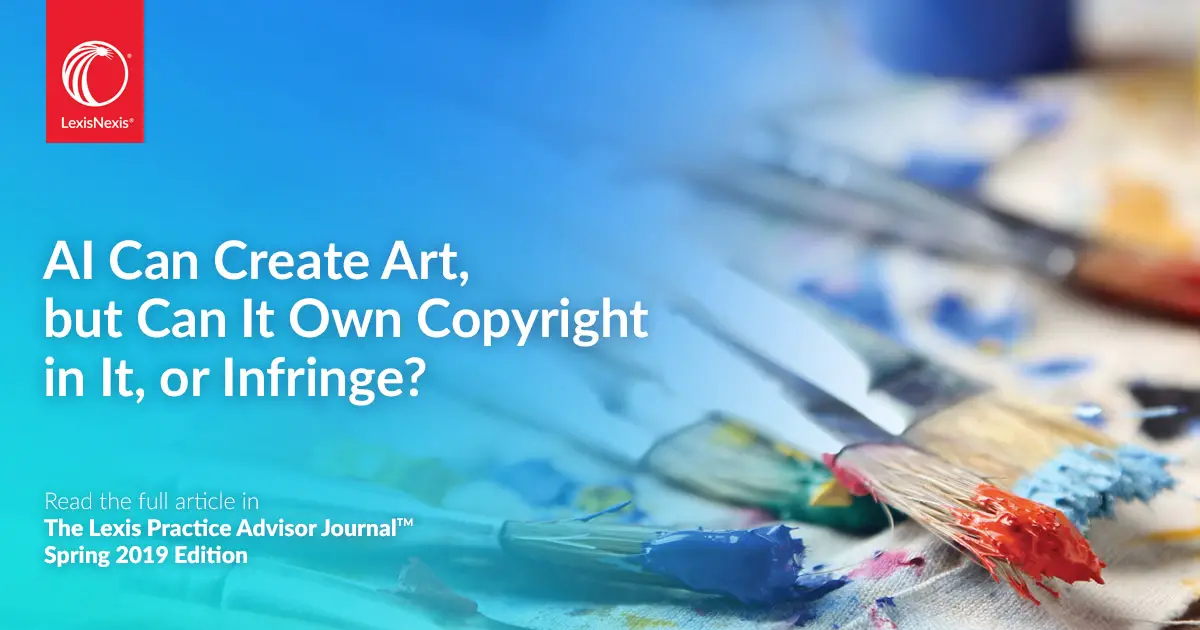Yes, AI art can be trademarked. The USPTO defines a trademark as “a word, phrase, symbol, or design that identifies and distinguishes the source of the goods of one party from those of others.” If an AI creates a work of art that is original and distinguishable from the works of others, it can be registered as a trademark.
Yes, AI art can be trademarked. In fact, any work of art created by artificial intelligence can be copyrighted and protected under intellectual property law. This includes paintings, drawings, sculptures, and other visual works of art.
However, it is important to note that the AI must be the author of the work in question in order for it to be eligible for copyright protection. If a human being created the work with the help of AI, then the copyright would belong to the human author.
The AI Art Copyright Problem
Can You Copyright Ai Artwork?
Yes, you can copyright AI artwork. In order to do so, the work must be original and created by the AI itself. Additionally, the work must be “fixed in a tangible medium of expression,” meaning it must be saved in some physical form (e.g., a computer file).
Finally, the copyright must be registered with the U.S. Copyright Office.
Can Ai Art Be Used Commercially?
Yes, AI art can be used commercially. There are already a number of businesses that use AI art to create products or promote their brand. For example, Microsoft has used AI art to create images for its advertising campaigns, and Honda has used AI art to design car interiors.
Who Owns the Copyright of Ai Art?
There is no one definitive answer to this question as it can depend on a number of factors, such as who created the artwork, what country the artwork was created in, and whether or not the AI used to create the artwork is considered to be a “work for hire”. Generally speaking, however, the copyright of AI art would likely belong to whoever created the underlying code or algorithm that generated the artwork.
Can I Use Ai Art in My Book?
Yes! You can use AI art in your book. However, there are a few things you should keep in mind.
First, AI art is often created by algorithms and thus may be subject to copyright protection. This means that you will need to get permission from the artist or copyright holder before using the work in your book. Secondly, AI art is often very high resolution and may need to be resized or cropped for use in your book.
Finally, because AI art is created by computers, it may lack the hand-crafted feel of traditional art. For this reason, you may want to use AI art sparingly or supplement it with other types of artwork.

Credit: arstechnica.com
Can Ai Art Be Copyrighted Reddit
Yes, AI art can be copyrighted. However, it is important to note that there are some limitations to this copyright protection. For example, if the AI art is based on pre-existing works, the copyright may only extend to the new elements added by the AI.
Additionally, it is possible for someone to create a very similar work of AI art without infringing on the original copyright.
Is Ai Art Copyright Infringement
Ai Art Copyright Infringement?
What is Ai Art Copyright Infringement?
This is when someone creates a piece of art using an artificial intelligence program, and another artist claims that this infringes on their copyright.
Why would someone do this?
There are a few reasons why someone might create a piece of art using an AI program and then claim that it infringes on their copyright. One reason might be that they want to get attention for their work.
Another reason might be that they want to make money from other people’s artwork. Finally, some people might believe that AI-created artwork is not really art at all, and so they don’t think it deserves the same legal protection as traditional artwork.
Is Ai Art Legal
Yes, AI art is legal. In fact, there are no laws specifically prohibiting the creation of art using artificial intelligence. However, there are some potential legal issues to consider when using AI to create art.
For example, if you use someone else’s copyrighted material to train your AI algorithm, you could be infringing on their copyright. Additionally, if your AI artwork contains offensive or obscene content, it could be considered illegal under obscenity laws.
Is Ai Art Ethical
Ai Art is a new and upcoming form of art that involves the use of artificial intelligence. While the concept is still in its infancy, there are already a few examples of Ai Art that have been created. One notable example is the Google DeepDream project, which used deep learning algorithms to create psychedelic images from photos.
Some people believe that Ai Art is unethical because it relies on machines to create works of art rather than humans. However, others argue that there is nothing wrong with using technology to create art, as long as the results are creative and original. Ultimately, whether or not Ai Art is ethical is a matter of personal opinion.
Ai Art Copyright Law
Copyright law is a hot topic when it comes to AI art. There are those who believe that copyright should protect the artist, regardless of whether or not they are using AI, and there are those who believe that AI art should be free for anyone to use. So, where does the law stand on this issue?
The Copyright Act of 1976 protects “original works of authorship” that are fixed in a tangible medium. This includes things like paintings, sculptures, and photographs. However, it does not explicitly mention computer-generated works.
So, does this mean that AI art is not protected by copyright law? Not necessarily. In 2014, the US Copyright Office released a statement saying that “copyright protection may extend to some computer-generated works…if they incorporate original elements created by a human author.”
So, if an AI work contains original elements created by a human author (like a painting or sculpture), then it could be protected by copyright law. However, there is still some debate over whether or not AI art qualifies as an “original work of authorship” under copyright law. Some argue that AI art is simply a result of algorithms and therefore is not truly original.
Others argue that even though AI art may be generated by algorithms, it can still contain originality if the programmer programmed the algorithms with a certain creative vision in mind. Ultimately, the question of whether or not AI art is protected by copyright law is still up for debate. But one thing is for sure: as AI technology continues to evolve, we will likely see more cases ofAI-generated artwork being disputed in court.
Who Owns Ai Art
Ai Art is a form of art created by artificial intelligence. There are two main types of Ai Art: generative and interactive. Generative Ai Art is created by algorithms that generate images or videos based on certain parameters.
Interactive Ai Art is created by algorithms that respond to input from humans, such as text, voice, or gestures.
So who owns these pieces of art? The answer isn’t clear cut.
In some cases, the artist may own the copyright to their work, but in others, the algorithm itself may be considered the author. For example, if an artist creates a piece of artwork using an AI program that they wrote themselves, then they would most likely be the copyright holder. But if they use an AI program created by someone else, then the copyright situation gets more complicated.
In general, it’s still unclear how intellectual property law will apply to works of Ai Art. This is an area that will need to be addressed by lawmakers and courts in the future as Ai Art becomes more prevalent. For now, artists and creators should be aware of the potential legal issues surrounding their work and consult with a lawyer if necessary.
Can I Use Ai-Generated Art for Free
Are you considering using AI-generated art for your next project? Perhaps you’ve seen some impressive examples of what AI can create and think it would be perfect for your needs. But before you go ahead and use any AI-generated art, it’s important to understand the legal implications.
In general, you cannot use AI-generated art for free. The creator of the artwork owns the copyright to it, just as they would if they had created it themselves. This means that if you want to use AI-generated art, you will need to get permission from the copyright holder first.
There are a few ways to do this. You could contact the artist directly and ask for permission to use their work. Or, if you’re using an online service that generates artwork, check to see if they have a license agreement in place that allows you to use the resulting images.
Keep in mind that even if you do have permission to use AI-generated art, there may be other restrictions in place such as how it can be used or where it can be published. So make sure you read any license agreements carefully before proceeding. Using AI-generated art can be a great way to add some unique visuals to your project.
Just make sure you get permission first!
Is Ai Art Public Domain
The term “public domain” refers to creative works that are not protected by intellectual property laws. This means that anyone can use, modify, and distribute these works without obtaining permission from the copyright holder.
There is some debate over whether or not artificial intelligence (AI) can create art that is eligible for public domain status.
Copyright law protects “original works of authorship,” which includes literary, dramatic, musical, and artistic works. AI-created works may be protected under copyright law if they are determined to be original enough.
In 2015, an AI system called “DeepDream” generated images that were later sold as prints and digital artwork.
The artist who created DeepDream argued that the work was eligible for public domain status because it was created by a machine and did not involve any human input. However, the U.S. Copyright Office issued a ruling in 2017 stating that “a work produced by a machine or mere mechanical process” is not considered an original work of authorship and is therefore not eligible for copyright protection.
This ruling leaves open the possibility that AI-created art could be protected under copyright law if it involves some level of human creativity or input.
For example, if a human programmer designs an AI system that generates images based on input from a user, those images could be considered original enough to warrant copyright protection.
Conclusion
Yes, Ai art can be trademarked. In fact, it is already happening. For example, a company called Artaic has trademarked their Ai art system, which they use to create mosaics.


